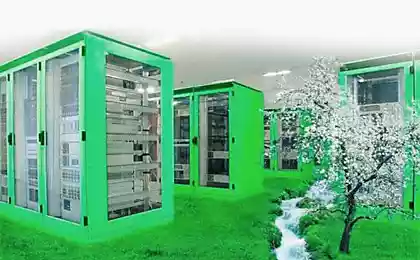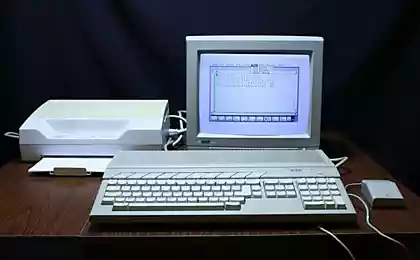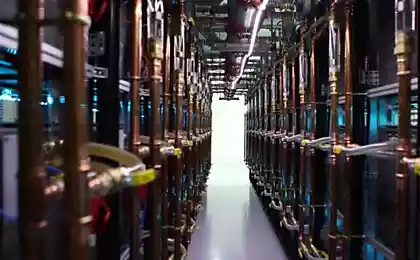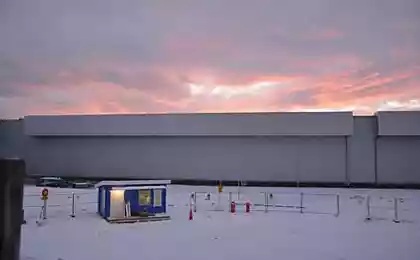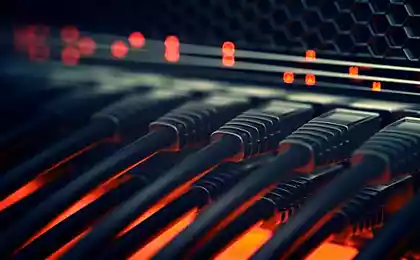1434
Data center at home
It happens that the fans and IT professionals create data centers in their homes, placing equipment in makeshift server rooms, garages, basements and home offices. Such people are called serverofily («server huggers»). These are people who seek to be closer to the equipment they use.
Preference data centers, or as they are called, "cave DC" play an important role in modern life and the development of IT technology. These DC, as opposed to large-scale data centers that are pioneers in the test server equipment. This kind of enthusiasts had a passion for IT and usually one of the first to begin using the new server systems, testing them in extreme conditions.
The reasons for creating such a variety of data processing centers. For example: small web hosting, launching their unique projects or just a passion for electronics and IT. Whatever the motivation, the project in any case requires some adaptation, including how to rework the power and network connections, and the adaptation and renewal of cabling throughout the home. Here are some examples of such projects.
Cloud in the basement h4> Canadian IT specialist Alan Boudreau (Alain Boudreault) has in its arsenal of enterprise-class equipment manufacturers such as Dell, HP, Sun, Juniper, IBM and IBM BladeCenter. Racks with this equipment he placed in his basement. His website contains a detailed overview of the installation, including all charts and components . Data center includes cloud Open Stack MAAS (Metal as a Service) and several storage systems (ISCSI and Fiber Channel).
Data Center - the star of YouTube h4> Some pet owners BFP post videos about them on YouTube. The most popular of these is Home Center Data Project , another project in Canada, the development of which began in 2005 as two computers in the closet and increased in 2013 to more than 60 servers. The project was documented in a series of videos that have gained more than 500,000 views on YouTube. In the commercials and the website also documented extensive cabling, cooling and process improvements in the network infrastructure.
amaze your provider h4> Sometimes people set the entire data warehouse. For example, in 2012, the IT specialist, known as houkouonchi, posted a video of his stand, who scored more than 220 000 views on YouTube.
Stands from IKEA h4> Why use a standard rack for data centers in your home, if you can place the equipment in a stylish table from IKEA? In one of the implementations of the home data center people are passionate about their hobby, adapted Swedish LACK side table for comfortable placement of servers and network equipment, creating LACKRack. It was found that the space between the legs is 19 inches. This is also the width of a standard slot in specialized server racks. Improvised units were created using parts bolted with screws to the legs of the table.
What should a proper mini-server h4> So, you - the head of the firm and decided to organize a server in the office, or just an enthusiast, decided to try everything in life and build a server at home, basement or garage. Not so important, what you need a server, if you have already decided to create such a miracle, it is necessary to know how it should look. Ideally, the server must comply with TIA-569. List of requirements for the room allocated for the server looks like this:
Preference data centers, or as they are called, "cave DC" play an important role in modern life and the development of IT technology. These DC, as opposed to large-scale data centers that are pioneers in the test server equipment. This kind of enthusiasts had a passion for IT and usually one of the first to begin using the new server systems, testing them in extreme conditions.
The reasons for creating such a variety of data processing centers. For example: small web hosting, launching their unique projects or just a passion for electronics and IT. Whatever the motivation, the project in any case requires some adaptation, including how to rework the power and network connections, and the adaptation and renewal of cabling throughout the home. Here are some examples of such projects.
Cloud in the basement h4> Canadian IT specialist Alan Boudreau (Alain Boudreault) has in its arsenal of enterprise-class equipment manufacturers such as Dell, HP, Sun, Juniper, IBM and IBM BladeCenter. Racks with this equipment he placed in his basement. His website contains a detailed overview of the installation, including all charts and components . Data center includes cloud Open Stack MAAS (Metal as a Service) and several storage systems (ISCSI and Fiber Channel).
"My first step was the installation of an electrical substation, which allows to provide a current of 40 amperes at 240 volts, ie, able to cope with the load if needed 9, 6 kW / h ", - says Alan. He teaches the development of applications and uses its DC for testing. "Servers are rarely run all at once, so the average consumption of 1-2 kW per hour," - he says. The cost of electricity in Quebec about 7 cents per kilowatt. Boudreau writes that this type of DC is not for the faint of heart.
Data Center - the star of YouTube h4> Some pet owners BFP post videos about them on YouTube. The most popular of these is Home Center Data Project , another project in Canada, the development of which began in 2005 as two computers in the closet and increased in 2013 to more than 60 servers. The project was documented in a series of videos that have gained more than 500,000 views on YouTube. In the commercials and the website also documented extensive cabling, cooling and process improvements in the network infrastructure.
"This project was designed not for profit" - writes the developer Etienne Vallee (Etienne Vailleux) of Hyperweb Technologies. "This plant was collected as a hobby, but after a while it quickly grew into a passion».
In 2013, the project has migrated from one house to another. "Part of the foundation has been specially designed to house servers and air conditioners," - said Valle. "Currently, the project includes 15 servers, connection capacity of 60 Mbit / s».
amaze your provider h4> Sometimes people set the entire data warehouse. For example, in 2012, the IT specialist, known as houkouonchi, posted a video of his stand, who scored more than 220 000 views on YouTube.
"Installation, in fact, not be in the data center. Not many have a full-size rack capable of storing more than 150TB of data, "- he wrote. "The front is fastened through the wooden floor in the cement foundation of the house. Fully equipped rack uses only 1 kW of power, but its capacity - is another matter ».
In 2013 houkouonchi said that he was contacted with Verizon, who was surprised to see the user's home Internet, generating more than 50 terabytes of traffic per month. Placing a server with such a great traffic generation violated the terms of service for home Internet service, and he was forced to go on a business plan.
Here's a tour of the rack houkouonchi, housed in YouTube
Stands from IKEA h4> Why use a standard rack for data centers in your home, if you can place the equipment in a stylish table from IKEA? In one of the implementations of the home data center people are passionate about their hobby, adapted Swedish LACK side table for comfortable placement of servers and network equipment, creating LACKRack. It was found that the space between the legs is 19 inches. This is also the width of a standard slot in specialized server racks. Improvised units were created using parts bolted with screws to the legs of the table.
Lack racks stimulated the appearance of the set design of new products. Dennemen Frank (Frank Dennemen), Technology Evangelist PernixData, adapted the initial specification LACKRack, to create a portable 19-inch rack.
"My home office is designed to be all the same office, and not the data center," - writes Dennemen. "So I tried to place a 19-inch server racks, without ruining the aesthetics of the home office." Place a rack you can anywhere in the house.
What should a proper mini-server h4> So, you - the head of the firm and decided to organize a server in the office, or just an enthusiast, decided to try everything in life and build a server at home, basement or garage. Not so important, what you need a server, if you have already decided to create such a miracle, it is necessary to know how it should look. Ideally, the server must comply with TIA-569. List of requirements for the room allocated for the server looks like this:
- , an area of 12 square meters, and the height of the ceiling - not less than 2.44 m;
- room should not be trimmed flammable materials;
- in the room should be at least one double grounded sockets, and if you follow the standard, in a room with an area of 12 square meters of such outlets should be 4;
- server should be located away from strong sources of electromagnetic radiation (server at a distance of 2 m from transformer station - it's a bad idea);
- for lighting in the room is recommended to use halogen lamps, suitable also "Saving Lamp", which will provide a minimum of heat, good lighting and a long service life;
- humidity in the room should be at a level of 30-55% at a temperature of 18 to 24 degrees Celsius.
- width of the rack should be 19 inches (482, 6 mm);
- Depth is selected depending on the equipment used: 60, 80 or 90 cm;
- mounting holes are located on the vertical elements of the rack every 1.75 inches (4.4 cm);
- standard rack height is 6, 12, 20, 42 U, etc.
To minimize potential problems with food should use an uninterruptible power supply. Best suitable UPS 5-6 kVA power, but if your budget is limited, or you do not plan to use the powerful equipment in large quantities, and want, for example, only 3 or 4 cars, you can use UPS and weaker at your own risk. Sales consultants can provide you with various UPS topologies: Line-Interactive UPS, Passive Standby (Off-Line) UPS and Double-Conversion (On-Line) UPS. Manufacturers claim that the best option for home servers will Line-Interactive UPS, but it is not so. Still, the best option - it's the UPS topology On-Line UPS (continuous), for example, APC Smart-UPS RT 5000VA.
These tips - it is basic that you need to know everything for the server and comfortable operation of your equipment.
I would like to add that no matter how tempting the prospect of any server hosting at home, is to remember and understand that there will be quite difficult to achieve an acceptable uptime at home. As an example, here are a few words with forum .
uptime even close to 5 minutes per year will not be because of the human factor. Here's what was in my practice, and led to such a low uptime:
- forgot to pay for the 'Net;
- dead bolt in a server, raid'a was not;
- clogged with dust - it is necessary to clean;
- dead Fan - should be changed;
- touched the wire;
- a server used as faylopomoyki, ran the place because recorded several films;
- linux kernel nedoobnovilos, computer did not come out of rebuta;
- provider abruptly changed settings dns'ov;
- light blinked;
- parents decided to wash the floors;
- fell out of the connector sata-cable;
- wi-fi card that was giving the 'Net, and abruptly hung introduced PC into a stupor, etc. blockquote>
You also need to remember that:
- This idea is not cheap;
- You will be difficult to provide optimal conditions for the operation of servers;
- In case of fire, etc. You run the risk not only of data and equipment, but also their living space;
- to constantly monitor the servers is possible only if you reside within easy reach of your server;
- during long trips to your project will be frozen, so as to leave equipment switched on without a review - it's a big risk.
10 signs that you - serverofil h4>
- Do you prefer large rooms with air conditioning and a minimum of upholstered furniture, as well as with fluorescent lighting;
- a constant hum and white noise calms you;
- Use a digital fingerprint or hand biometrics for access in the room is still interested in you;
- You can not go past the dirty or disorganized cabling without expressing disapproval and shaking his head;
- flashing green or yellow light has a soothing, almost hypnotic effect, when you look at it;
- Do you like the feeling of cold metal studs, you often tend to touch them;
- Do you think that the cloud - it is the same as that virtualization is something that is worth ever pay attention, but it is necessary to solve the current problems of users;
- Do you believe that cloud data is not safe, no matter what the supplier tells you;
- you have your own ideas on how to improve equipment performance through direct exposure (eg the replacement of elements);
- You had a passion for computer equipment, always trying to improve it and to find creative solutions for optimal performance.
Source: habrahabr.ru/company/ua-hosting/blog/236217/


